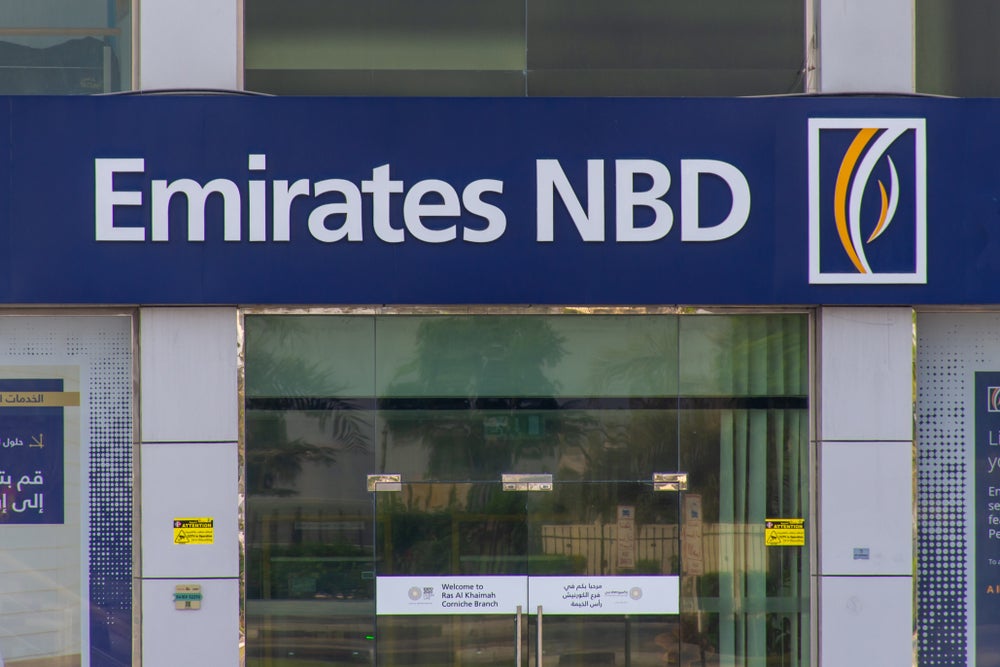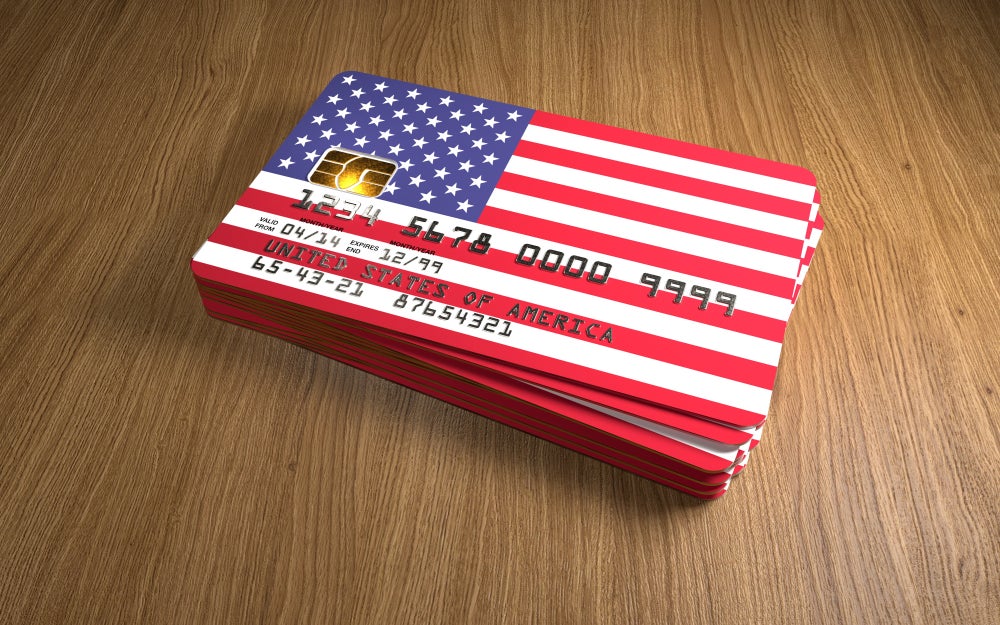Italy’s payment card market is characterised
by heavy debit usage, but as Victoria Conroy reports,
innovations such as prepaid cards and contactless technology are
making their mark. Credit card usage is also holding up amid strong
promotional efforts by Italian banks.
Italy’s consumers may have one of the highest levels of cash
payments in Europe, but payment cards of all forms continue to grow
in usage, with credit cards in particular making something of a
rebound over the last year. Italian issuers are capitalising on
this by rolling out increasingly sophisticated credit offerings and
are also trialling contactless payment in the aim of taking a
bigger bite out of cash usage for low-value payments.
Debit dominates, but credit catches up
Statistics from Banca d’Italia show that by the end of 2007, there
were over 34.4 million debit cards in circulation, compared to 31.8
million at the end of 2005. In a population numbering 60 million,
this represents a healthy penetration rate of 0.57 debit cards per
person.
However, of the 34.4 million debit cards in circulation, around
1.37 million of them are ATM cards only. In the fourth quarter of
2006, over 210 million debit card payments, representing a total
value of €20.07 billion ($31.55 billion) were conducted; by the
fourth quarter of 2007, there were over 225 million debit card
payments performed, amounting to a total value of €21.7
billion.
Credit card numbers in 2007 rose to 16.2 million, compared to
14.3 million in circulation at the end of 2005. Corporate credit
card numbers have seen the fastest growth, rising from 976,000 in
2005 to 1.7 million in 2007, boosted by promotional efforts on the
part of card networks Visa and MasterCard and their issuing banks
in response to increasing corporate demand for tighter expense
control management.
How well do you really know your competitors?
Access the most comprehensive Company Profiles on the market, powered by GlobalData. Save hours of research. Gain competitive edge.

Thank you!
Your download email will arrive shortly
Not ready to buy yet? Download a free sample
We are confident about the unique quality of our Company Profiles. However, we want you to make the most beneficial decision for your business, so we offer a free sample that you can download by submitting the below form
By GlobalDataIn terms of total credit card spending, in 2005, there were over
462 million payments by credit card amounting to a total value of
€46.6 billion; by 2007, 503 million credit card payments had been
made, amounting to a total value of €52.35 billion.
Increasing consumer wealth and changing payment
trends
In January 2008, Banca d’Italia published its 2006 Household Income
and Wealth survey, showing that average annual household income in
2006 amounted to €31,792, a rise of 7.8 percent in nominal terms
and 2.6 percent in real terms compared to the previous survey.
The challenge for Italian payment players is channelling this
increasing consumer wealth away from spending on cash and onto
payment cards. The Banca d’Italia survey confirms that there is a
gradual substitution of cash and cheques in favour of payment
cards, standing orders and direct debits. Some 63 percent of
households have a payment card of some sort; 60 percent have a
debit card, 31 percent a credit card, and 2.2 percent a prepaid
card.
A recent survey by Italian banking giant UniCredit, conducted by
Cittadinanzattiva and published in early 2008, found that eight out
of ten retail shops in Italy accept debit and credit card payments
without problems, while the number of POS units distributed has
cleared the million mark, in line with other western countries.
However, lack of information, fears about security and consumer
unfamiliarity over where payment cards can be used represent a
stumbling block to further growth.
Many Italian consumers only know about basic functions
associated with payment cards, such as withdrawals and purchases,
and are not aware that other functions such as money transfers,
bill payments and deposits in ATMs are all available. According to
the UniCredit survey, nine times out of ten, Italian households
still use cash for payments, while credit cards are used for
medium-range transactions (around €80), resulting in a significant
increase in costs for the system, which are primarily passed back
on to final consumers.
In relation to debit cards, they are used primarily for cash
withdrawals but are virtually never used for bill payments,
internet purchases or cash deposit transactions. As for credit
cards, they are used primarily to pay for purchases in retail
locations. Some 63 percent of debit cardholders use their cards
frequently during the week, compared to 39 percent of credit
cardholders.
“In our country, we are still too attached to cash,” says
Gabriele Piccini, manager of
UniCredit’s Italian retail division. “In Europe, only Poland
performs more cash transactions than Italy, and it has been
calculated that cash management in businesses (cash counting, daily
depositing, etc.), banks (collection and supply of banknotes), and
for citizens (robberies, loss of interest) has an annual cost
estimated at €10 billion. We need to incentivise consumers to use
electronic money also for minor purchases. The shift from cash to
electronic money would also bring benefits for government
agencies.”
Prepaid popular in Italy
However, consumer apprehension over ‘hidden’ bank fees and card
fees has deterred many Italian consumers, particularly those who
are underbanked and immigrants, from utilising full banking
services, and left a space in which prepaid cards as a form of
payment have grown exponentially.
Prepaid cards are comparatively cheaper for Italian consumers
than other forms of payment cards – whereas many Italian prepaid
cards cost between €5 to €15, credit cards can cost as much as
€30.
Several banks in Italy charged annual account management fees of
€90 per year. However, recent Italian legislation abolished the
fees related to closing of open-ended contracts, such as bank,
securities and savings accounts in August 2006, and the Italian
banking industry has recently introduced several related
initiatives to ease customer mobility.
Statistics from the central bank, Banca d’Italia, and the
European Central Bank show that multi-purpose prepaid cards have
grown rapidly in a short space of time. In 2002, there were 74,000
cards in circulation; by 2007, that figure had jumped to 5.8
million, helped by widespread promotion by prepaid players and the
familiarity of Italian consumers with prepaid payment for mobile
phones.
Reloadable prepaid cards accounted for approximately 73 percent
of all prepaid cards in Italy, a clear contrast to other European
markets where closed-loop disposable cards are the norm. January
2008 figures from
Visa show that there were more than 5.4 million Visa prepaid
cards in issue as of the end of 2007, generating €4.8 billion in
annual spend.
Gianluigi Rocca, head of marketing for Italian payment processor
SIA-SSB payment cards business, told CI: “From our own internal
research, prepaid card number growth in 2007 was around 27 percent.
What is more interesting from my point of view is that growth in
the numbers of card payments was in the range of 74 percent. It was
the same for 2006 and 2005 as well.”
The payment networks
Created in 1995, the Convenzione per la gestione del marchio
bancomat (COGEBAN)
is the organisation responsible for the development of the Bancomat
(ATM) and PagoBancomat POS payment networks. Comprising over 600
member banks, it is responsible for technical standards,
investments in and upgrades to the system, and new product
development such as prepaid or EMV cards.
At the end of 2006, there were 27.5 million Bancomat and
PagoBancomat debit cards in force, making it one of the largest
debit card programmes in the Single Euro Payments Area (SEPA).
However, the rate of growth had slowed considerably by 2005,
where only 2 percent growth in the number of cards was reported, as
compared to the 8 percent recorded in 2004. The growth rate for the
number of payments made using Bancomat and PagoBancomat cards has
also fallen, to 5 percent in 2005 compared to 9.6 percent in
2004.
Part of this decline is due to the efforts made over the past
couple of years by Visa and
MasterCard in pushing their respective debit schemes, V PAY and
Maestro. Although Maestro has held a dominant position in Italy,
accounting for most pay-now transactions in terms of value, Visa
Europe scored a notable success for its V PAY scheme in April 2007,
when it was announced that a group of 5 leading Italian banks had
committed to issuing V PAY.
Banca Carige was the first Italian bank to start issuing V PAY,
followed soon after by UniCredit. Visa Europe has secured
agreements for the issuance of a total of 6 million V PAY cards in
Italy.
In January 2008, Visa Italy reported that there was an increase
of 8 percent in the number of transactions made with all Visa
payment cards at POS locations. However, it was credit that scored
the biggest increase, with a jump of 21 percent in the number of
transactions made with Visa-branded credit cards at the POS.
According to Visa Italy, the total purchase volume carried out
on Visa payment cards in Italy amounted to €40 billion in 2007,
with total volumes at POS locations amounting to €34.2 billion,
representing 360 million transactions, an 8 percent increase. More
than 2.5 million new Visa-branded cards were issued in 2007,
bringing the total number of Visa cards in issue to 23.4
million.
There was a 9 percent increase in Visa debit cards issued to
bring the total to 15.3 million, and a 5 percent increase in the
numbers of transactions made at POS locations with Visa debit
cards. However MasterCard’s Maestro scheme, which is co-badged with
PagoBancomat debit cards, numbered around 17 million at the
beginning of 2007. MasterCard has indicated that around 5.5 million
debit cards in Italy will migrate to become Maestro-only cards in
order to achieve compliance under the SEPA Cards Framework.
Visa and MasterCard are also aiming to penetrate the low-value
payment sector. Besides the issuance of V PAY, Visa is looking to
roll out its contactless payment proposition, payWave, while
MasterCard has already announced the launch of its PayPass
contactless proposition in conjunction with Poste Italiane, Italy’s
foremost prepaid card issuer.
Extending credit at the POS
POS lending is the main driver of consumer finance in Italy, and
many providers’ ‘pay-later’ cards are typically deferred debit
cards. True revolving credit cards are usually provided as an
additional component to consumer POS loans.
However, more stand-alone credit cards are entering the market,
enabling issuers to capitalise on better customer transactional
data to more effectively target and promote cards to different
consumer segments.
Because of the dominance of consumer finance providers in
offering credit cards, loyalty programmes are offered primarily by
retailers, although some of Italy’s larger banks are enhancing and
expanding their loyalty programmes.
The most obvious example of segmentation in action is the focus
that issuers are placing on the high net worth or affluent consumer
segment – revolving premium cards are the fastest-growing credit
card segment, according to MasterCard.
Gold, platinum and other premium cards are achieving a higher
penetration (typically 3 percent) rate than other types of credit
cards, and MasterCard says it expects this segment to reach a
growth rate of between 8 percent and 10 percent over the next
decade.
In relation to credit cards, higher levels of charges, along
with the continuing regulatory rumblings over European interchange
fees, have led to merchants encouraging consumers to use cash due
to the higher charges they face.
In June 2006, in response to the European Commission Sector
Inquiry on Retail Banking, Italian card issuer and acquirer CartaSi
implemented a new pricing structure under which the average annual
fee of newly issued CartaSi cards, as defined by its member banks,
fell from €17.06 in 2004 to €13.16 in 2005.
Leading issuers
Italy’s leading credit card players are predominantly
Italian-owned, with the exception of Findomestic Banca, which is
owned by Cetelem, and BankAmericard, a unit of Germany’s Deutsche
Bank. CI estimates that BankAmericard had a 6 percent market share
as of the end of 2007.
• CartaSi
CartaSi is an interbank company owned by an Italian banking
consortium. CartaSi issues credit cards for more than 800 banks
including Intesa Sanpaolo, Findomestic and Bank-Americard.
In 2007, CartaSi issued around 1 million new cards, to bring the
total number of CartaSi cardholders in Italy to 7 million. CartaSi
is also the largest acquirer in the Italian market, having around
50 percent of the market, equaling a value of €31 billion. In 2007
CartaSi managed over 485 million transactions for a volume total of
€45.2 billion, an increase of 6.5 percent compared to 2006.
The average annual number of transactions per card rose to 34.6
in 2007, compared to 33.7 in 2006.
The average purchase value per card in 2007 was €107.2, compared
to €102.5 in 2006, while each CartaSi cardholder spent an average
€3,708 in 2007, compared to €3,236 in 2006. In 2007 CartaSi
developed its mobile payments proposition, and worked aggressively
to expand the number of credit cards in issue.
The year 2007 also saw CartaSi launch its first Black premium
card to target the increasingly important affluent segment, and it
also launched online instant issuance of cards. CartaSi estimates
that in 2007 it had a market share of 24 percent of all payment
cards in circulation and 34 percent of active cards.
• Intesa Sanpaolo
Following its inception in January 2007,
Intesa Sanpaolo has leveraged its market strength and presence
to increase its market share. Its Setefi unit, which specialises in
the management of electronic payment systems, acts as an acquirer
for retailers, the issuer of own-brand credit cards and manages the
issuance of Moneta cards for Intesa Sanpaolo group banks.
In 2007, activities were focused on maintaining and developing
market shares and profitability as well as on containing risk
profiles, generating an 11 percent growth rate in intermediated
volumes compared to 2006. The number of directly-issued and managed
cards rose to approximately 4 million, an increase of 5 percent
over 2006.
• UniCredit
UniCredit, following its 2007 merger with Capitalia, reported that
by the end of the year, 235,000 new credit cards, including 130,000
revolving cards, had been issued, bringing the total number of
credit cards in issue to 1.3 million, including around 800,000
revolving cards. In addition, in 2007 the volume of spending
reached a total of €1.84 billion, a 22 percent increase over
2006.
• Findomestic Banca
Findomestic, owned by French consumer finance giant Cetelem, is
part of the Findomestic Group, comprising consumer finance
companies Credial Italia, Credirama and Findomestic Leasing.
Findomestic Banca offers classical credit through instalment
plans and revolving credit. Findomestic is Cetelem’s largest and
most successful foreign interest.
As of October 2006, revolving loans accounted for 23 percent of
new loans granted in 2006, granted notably through the bank’s own
Carta Aura credit cards that had an 18 percent market share (or 2.9
million cards) as of October 2006.









